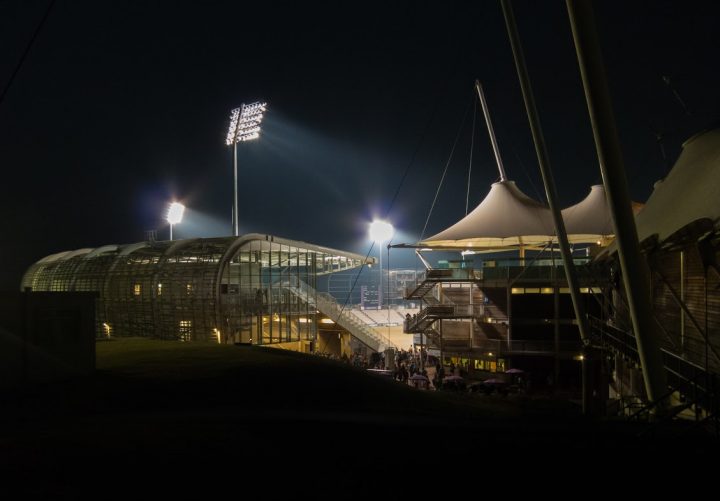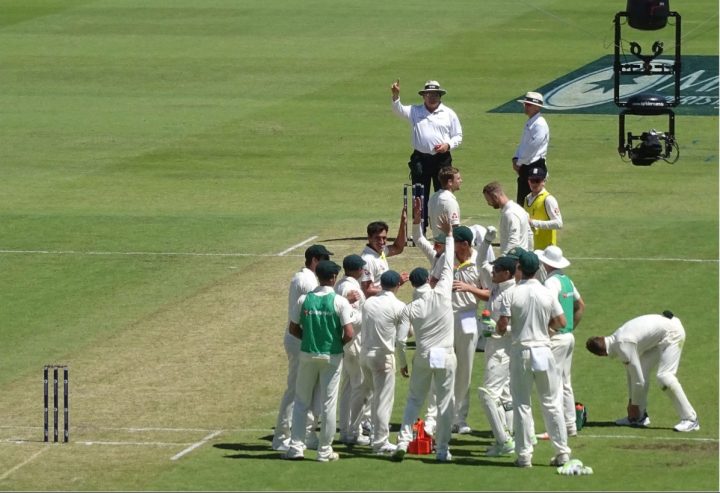Today we welcome new writer Dan Humphreys to TFT. He assesses Ireland’s recent performances and what the future might hold across the Irish Sea.
The bizarre nature of following Irish cricket is a genuine inability to tell what they will do next. Despite a promising opening display in the T20 World Cup, confidently brushing aside the Dutch, they went on to be comprehensively beaten by Sri Lanka. The tournament came to a head when they were unceremoniously dumped out by Namibia.
I watched the Namibia game and was disheartened because while Ireland have achieved relative success in recent years, I would imagine most global cricket fans would view us as a nation which has not been able to push on from Kevin O’Brien’s heroics against the old enemy in 2011. That’s the nature of the beast, however, as a smaller nation who don’t consistently battle with the top teams, you are judged on your performances in major tournaments. By that yard stick, Ireland have regressed since that famous night in Bangalore. Failure to get past the group stage in the 2012 T20 World Cup and since have failed to even be at the top table, unable to get out of the preliminary stages of each subsequent edition.
The disappointment, however, of the 50 over World Cup results is probably harder to stomach for Irish fans. In 2015, despite a promising victory over the West Indies, we narrowly missed out on the knockout stages. This result, while disappointing, was completely palatable for lovers of Irish cricket. Simply competing on the biggest stage is what all of us want. The devastating outcome was the failure to qualify for the new 10-team version of the tournament in 2019. The prospect of playing in a Cricket World Cup right next door was incredibly exciting and the disappointment was palpable. This most recent result in qualifying for the T20 World Cup in Australia is extremely positive. While the qualifying tournament was not without its speed bumps, the result in this case was the important detail.
Ireland now have a rare opportunity to the right the wrongs of the previous tournament, only a year on. The results in this Irish summer have been symptomatic of a team who are on the cusp of finding a way of consistently getting results. The second T20 of the summer saw Ireland fall only 4 runs short of chasing 225 against a strong India team. The ODI series at home against New Zealand was also well within Ireland’s grasp. An innings by Michael Bracewell of unbelievable quality which culminated in 24 being taken off the final over with New Zealand nine down. This was the most runs scored in the final over of an ODI to win the game. The third game in that series was similarly heartbreaking for Irish supporters. New Zealand posted 360/6 from their 50 overs, a total that I and I’m sure many others believed at the time was well beyond Ireland’s reach. However, sparkling centuries from Paul Stirling and Harry Tector brought Ireland within touching distance of a record chase in One Day Internationals. Ireland fell just two runs short of a famous victory.
Despite Ireland putting in some high quality performances this summer, they were zero wins from ten games this summer going in to the most recent Afghanistan T20 series. Performances and good efforts can only get you so far in the eyes of the public. In the end people want to see their country deliver results. That’s exactly what we got against a quality Afghanistan outfit. Coming down to the final game of the series in which Ireland stormed home through George Dockrell in a seven over a side thriller in Belfast.
While their results in recent times have been somewhat disheartening, any cricket fan can see that Ireland are now producing young players that can produce quality performances at the top level. Josh Little’s production with the ball has seen him gain a contract with Manchester Originals for the rest of the Hundred, picking up the wickets of Faf Du Plessis and David Wiley in his first game. Mark Adair’s red ball skills have been impressive but he’s also provided a genuine swing bowler for Ireland with the new ball in the white ball forms. Ireland’s fast bowling stocks are on the rise but the story of Ireland’s summer has been the coming of age of Harry Tector and the return of George Dockrell.
Tector’s hundreds this summer were the innings of a top international batter. His maturity at the top level is something not seen in Ireland since Eoin Morgan’s meteoric rise. His vital contributions with the bat already seem to have guaranteed that he will one day be Ireland’s captain. Dockrell’s return as a lower order batter is a fascinating one. He has been a revelation with the bat this summer but the part about Dockrell’s return that is most engaging is that he appears to be a man who has found his love for the game again. He was earmarked as Ireland’s next great spin bowler and when this didn’t pan out it was I’m sure an extremely difficult cross to bare. Despite getting back in to the team largely on his batting, he has bowled important overs and will likely play the all rounder role in Australia this winter. The continued success of Ireland’s finest batsman, Paul Stirling and the quality displayed by Lorcan Tucker with both the gloves and the bat are also encouraging signs ahead of the winter.
Following Irish cricket can be baffling, bordering on distressing. However, with the ICC future tours program outlining a much busier schedule for Irish cricket in the coming years, the belief must be that if Ireland can consistently play against the best sides in the world (and consistently is the key word here), then the quality of cricket and therefore the results can only trend in one direction.
David Humphreys









I guess the obvious problem Ireland has with cricket is the weather. Even worse than Wales it rains a lot, so opportunities to play are restricted even in summer. This means anyone who shows real talent there has to move to England to get the necessary opportunities. Obviously there are plenty of Irish already living in England but as it’s a minority sport in their homeland how many think to play it here. The youngsters don’t have heroes to inspire in the same way as in Rugby or Soccer or even Hurling. Hence only the occasional Morgan style discovery. I can’t see things being any different in the future and it’s a similar story in Scotland too.
The weather is always a feeble excuse. The best Irish and Scotish players qualify for England because they want the best fixtures.
Otherwise, I see we’re trusting Hales again. Regaining trust seems to boil down to Morgan retiring and the better player reportedly breaking his leg on a golf course.
Have you ever spent any time in Ireland? It’s a different climate. Which is a major reason why there’s so little cricket played. Hurling is a more popular sport over there.
It’s a big step to up stakes and move abroad away from family and friends when you’re young, which is what players have to do if they want to be professionals. If you’re Irish over here and so a British citizen you qualify for England anyway.
Hi Marc, I’ve grown up in Ireland my whole life and played in the system here since I was 6. The weather and the popularity of Gaelic games are absolutely a draw back from cricket. However there are many cricketers with at least 3/4 very strong senior leagues and unions. While in previous times there may have been a much stronger pull to England the recent upgrade to test status has introduced the lure of central contracting with Ireland. Making playing for Ireland a much more achievable full time job. The introduction of a List A and First Class system is also a recent development. I would say Irish cricketers are a lot less dependent on the English system than even 8-10 years ago.
I haven’t spent very much time in Ireland, but I’ve spent enough to know that the “it always rains in Ireland” line is as much a cliche about Ireland as it is of England, even if parts of Ireland are very wet! I’ve spent over a week walking a long-distance footpath in the west of Ireland in March, for example, and it rained for two days–which is no worse than my experience of walking long-distance paths in England at somewhat more clement times of year (and I’ve spent longer in the Lake District in August and it rained almost every day!) I’ve also lived in an area of France which is almost as wet as western Ireland–and no-one talks about central France as being too wet to play summer sports!
You’re also ignoring the disparities between areas of the country. The rainfall in Dublin is only about 60% of that in Cork, for example; that of Derry about 70%. So if you’re explaining why Munster and Connaught aren’t as much cricket playing areas as Leinster and Ulster, you might have a point; but your overall point doesn’t really hold up.
I’ve always understood that the main reason cricket hasn’t been popular–and probably one of the other reasons it’s more popular in Ulster than some regions–is cultural: cricket has long been thought of as the sport of the colonial invader, brought in by (not always very well loved) outsiders. Hurling, in contrast, is an Irish sport.
I understand the weather isn’t superb in Ireland but it’s definitely not too wet for cricket. Our season stretches from April-September. For example having returned to senior cricket in Ireland for the last two years since the pandemic, my club has had only 4 Saturdays washed out, I’m sure areas such as Yorkshire in the North of England have similar enough levels of summer rain. So I don’t really accept the weather argument. I agree to much of the population from traditional Gaelic games sporting backgrounds there are many who view cricket as a very British game, associated with the colonisation of Ireland. However, I would also suggest that some of the stronger cricket clubs thrive in traditional nationalist and republican areas. For example, Eoin Morgan’s former club, Rush C.C., in North Dublin has been successful at both senior and junior levels for an extended period and is in the heart of traditional republican area. So I would say cricket has found a home across varying religious areas and across the island, not only in traditionally Protestant areas in Ulster.
It’s also an only partly accurate cliche to some extent as far as cricket is concerned. (London)derry and Dublin, which are the home areas of the island where two of the three first-class teams come from and home to three of the four inernational grounds, appear to have a similar rainfall during the cricket season to Bristol and less than Manchester. And I’ve never heard that argument applied to club games in Gloucestershire or Lancashire!
Dan Humphreys, I can’t believe that you were Gossip Girl all along!
The biggest problem Irish cricket faces in my opinion is that it is still only played in a small number of Irish schools.
The clubs and provinces have good underage structures but until more schools invest in the game, it won’t grow.
Of course there is big competition from rugby , soccer, gaelic football and hurling and athletics but not all school kids want to play these games.
I don’t know what the solution is but maybe if there was a bigger marketing push from the Irish Cricket Union it might help.